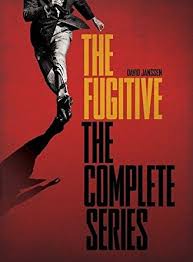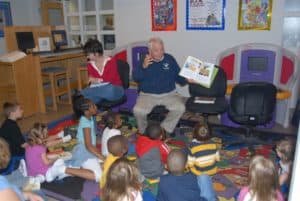 I was eleven when I moved from the city to the suburbs in the East Bay Area west of San Francisco. I left all the city streets behind – in the 1880s Berkeley had been designed as a grid that easily and efficiently moved from the Bay waters to the golden hills above. Those foothills rose across to the Sierra in the distance.
I was eleven when I moved from the city to the suburbs in the East Bay Area west of San Francisco. I left all the city streets behind – in the 1880s Berkeley had been designed as a grid that easily and efficiently moved from the Bay waters to the golden hills above. Those foothills rose across to the Sierra in the distance.
Moving as a pre-teen, I also abandoned all of my elementary school friends and started afresh in a town where the valleys and grassy rolling hills were situated next to the freeway that headed to Sacramento and Nevada.
There were three or four floor plans in the houses of this post-World War II development of Pinole Valley Estates. Houses were lined up on the streets that were tucked among the ravines. The outside paint color and landscaping distinguished one home from another, but the interiors were eerily similar. Spending the night in a classmate’s home was always a bit surreal when the pink or green porcelain sink in the twin, back-to-bath baths matched those in my own home. Each kitchen had the modern miracle of a dishwasher; each garage was built for two cars. One was usually a station wagon. The small, manicured yards were fenced and lines with wild, red berried pyracantha and tall, resilient oleander bushes.
Luckily, during this baby boom, nearly every home on my street housed a family with two to six kids. Summer days were spent building rafts on Pinole Creek or navigating the miles of golden hills yet to be developed. Early evenings into dusk, there were perhaps ten to twenty of us playing Kick the Can. This was a California childhood in the 60s where black-and-white televisions sported rabbit ears and garages were emptied for Friday night neighborhood dances.
It took a few weeks after we moved into our new home for the neighborhood girls to welcome me with open arms. However, kids are kids and it didn’t take long for my new next-door neighbor to become my new best friend. She had two brothers the same ages as my younger brothers. Her house was two-storied, mine was only one. We spent hours in her upstairs room upstairs reading Teen and Ingénue magazines and listening to her extensive collection of 78s. In my house, we learned to sew and type and watch my stay-at-home mother in awe as she made Jell-O parfaits and cut-up cakes.
Because her dad worked the graveyard shift at the Southern Pacific Railroad, he was home during the day and the television was always on. Or so it seemed to me. In my home, the television was strictly managed by my step-father. It was only on Sunday nights that the family watched our black-and-white TV – the Wonderful World of Disney and the Ed Sullivan Show.
Therefore, my memories of many television shows of the 60s are of watching them along with my adopted next-door family. Bewitched, Bonanza, Gomer Pyle, Route 66, Mr. Ed and countless other television shows (and their reruns) were on back to back at the Campbell house. One that intrigued me the most, I think, was The Fugitive. Dark and brooding David Janssen was running from the law every episode. There was no need to see them in any order because each episode was another town, another cast of characters, and another chase by Indiana State Police Detective Lt. Gerard.
Years later, of course, Harrison Ford starred in the movie version in 1993 (now twenty-five years past!) A fan of Mr. Ford, I’ve seen the movie countless times. The details are changed in the movie, but the premise remains the same. Dr. Kimble’s wife was murdered by a one-armed man and Dr. Kimball must prove his innocence.
Many people surmise that the Fugitive was based on the story of real Dr. Sam Sheppard who was accused of murdering his wife in their home on Lake Erie, Ohio. Although Sheppard was convicted of the crime – second-degree murder – and given a sentence of life in prison, he always professed his innocence. He claimed his wife was murdered by a bushy-haired man. He was acquitted ten years later in a retrial. The creator and writer of the Fugitive series, however, denied the connection to Sam Sheppard.
The Fugitive ran for four years with thirty 51-minutes episodes produced each year. They were aired on Tuesday nights at 10. Knowing this, it was obviously summer reruns I watched next door – probably beginning in 1965 or 1966. The first three seasons were filmed and aired in black and white; the last and fourth season (1966-1967) was in color. The last season began in September 1966 and 28 episodes were aired through mid-April.
Producers and writers of The Fugitive wanted to leave Dr. Richard Kimble forever running. However, they realized that their audience needed a conclusion. ABC’s vice president of programming, Leonard Goldberg claimed in a Vanity Fair article (Aug. 29, 2017) “I realized we were going to leave viewers empty-handed, and that was wrong.”
However, audiences, who had seen the fourth season end in April 1967, were made to wait until August for the finale. The Judgment Part 1 and Part 11 were aired on August 22 and 29, 1967. Because it was aired in the summer, I may have seen those episodes. I know for sure that the Campbell family would have watched them on August 22 and 29. A record 78 million viewers, or 72% of the homes that had televisions, watched The Judgment – Part II. For more than ten years afterward, the final episode of The Fugitive held the record for being the most-watched in television history. The Fugitive was a television milestone.
I am struck by the names of actors who were cast as one, two, three or four-time guest characters: Ronnie Howard, Bruce Dern, Brian Keith, Charles Bronson – the list is well over one-hundred of well-known names. Because each episode of the Fugitive stood on its own, stars often played different characters in several episodes.
The Morrill Memorial Library has the four seasons of the Fugitive in its collection. You just might want to binge-watch along with me and travel back to the 60s again – or for the first time.
Charlotte Canelli is the library director of the Morrill Memorial Library in Norwood, Massachusetts. Read Charlotte’s column in the May 24, 2018 edition of the Norwood Transcript and Bulletin.



